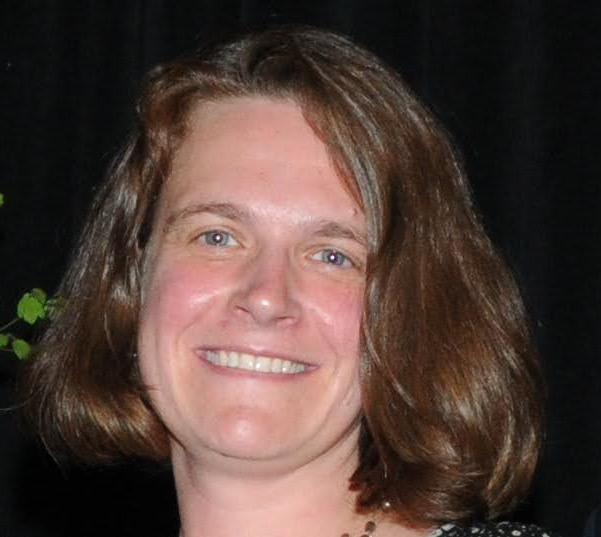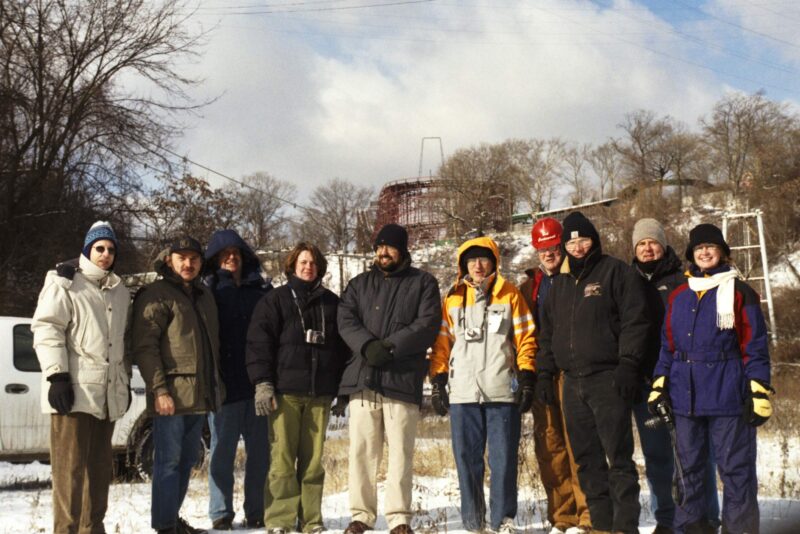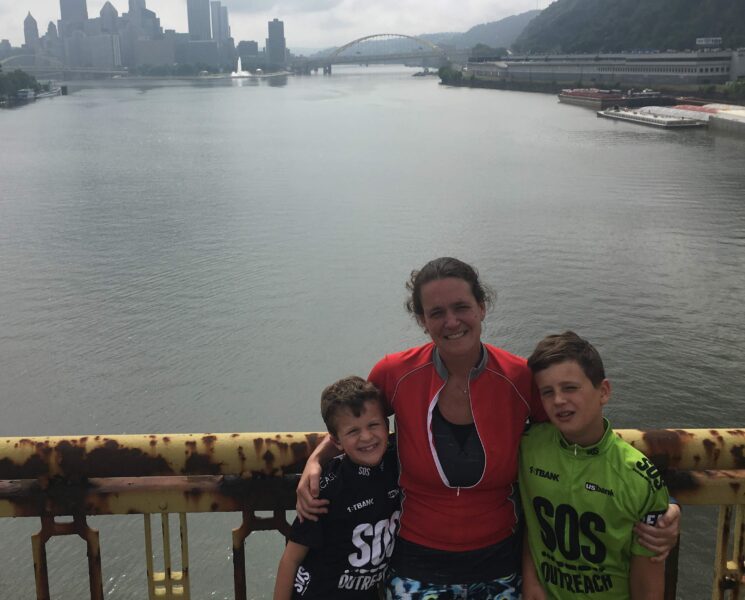“I think that the story is so important to tell and I think it’s a huge accomplishment that the trail is built. That is really attributed to so many different people who played different roles and each organization certainly played a role.”
-Hannah Hardy, April 3rd, 2019[1]
Closing the final major gaps in the Great Allegheny Passage (GAP) required a knowledge of land acquisition and community development, something Hannah Hardy had plenty of experience with. In 2000,Hardy started working in Pittsburgh Mayor Tom Murphy’s Neighborhood Policy Office,
where she had he first interaction with trail and parks projects. Mayor Murphy tasked Hardy with coordinating trail development, which required getting communities and parks involved in the work. This was Hardy’s introduction to trail land purchase, design, and development. Hardy’s day-to-day work dealt with anything from grant writing to purchasing right-of-ways or gaining easements of land from private landholders, and even taking some time to learn about the construction of trails out in the field. This experience in trail development led to Hardy’s involvement with the Steel Valley Trail Council (SVTC) after Mayor Murphy suggested she make connections with established trail groups across the Pittsburgh area.
“I actually spent a lot of time out on the trails before they were built with the Department of Public Works and they did a lot of the building. […] I’m certainly not an engineering expert, but I would be out there making sure that things were happening. So, my day to day was really any number of [things], meeting with a property owner [because] we want to acquire this easement, or we’re going after this money, to being out on the trail with the foreman.”
-Hannah Hardy, April 3rd, 2019[2]

Hardy and Dennis Pfeiffer, both ATA Board members, accepting a check from the State of Pennsylvania regarding funds for trail projects in 2005.
After leaving the Mayor’s Office, Hardy joined the Pennsylvania Environmental Council (PEC) and operated under then-Vice President Davitt Woodwell helping to spread the nonprofit’s mission of “conservation through cooperation”; there her work primarily focused on community access to water resources in Western Pennsylvania funded by the Pennsylvania Department of Conservation and Natural Resources (DCNR).[3] Funding from the Katherine Mabis McKenna Foundation provided Hardy to focus on both the short-term completion of the Great Allegheny Passage and ensuring the long-term sustainability of trail and greenway planning, implementation, and maintenance throughout Pennsylvania. From there she continued her work with SVTC, and joined the Regional Trail Corporation (RTC) in 2004. She served as president of RTC in 2008 & 2009 and re-joined the RTC board from 2011-2013.
“[The Pennsylvania Environmental Council] played a big role in the development of The Great Allegheny Passage and, you know, some of that was through supporting my work. I was writing a lot of the grants even when I was at the Environmental Council, things like that. So, that was kind of the nature of my role. It was split between land and water trails. And, I mean, PEC was just very supportive of completing the Passage.”
-Hannah Hardy, April 3rd, 2019[4]
Hardy faced numerous challenges as she helped the RTC find a trail route from McKeesport to Pittsburgh. This feat received a giant boost when the RTC acquired U.S. Steel’s coke-gas pipeline property. It was with the assistance of U.S. Steel–through its CEO John Surma, and its subsidiary, Transtar Railroad–that made it possible for the RTC to acquire this segment of the trail.
The coke-gas pipeline is the linchpin because there was no alternate. It was the lynchpin because the alternate would have been so challenging that the trail would not have been used. […] The reason I say it was the linchpin is because there was no other geography. It was between a bench of a hillside and active railroad lines. So, if we didn’t get that piece of property, the alternative would have been an on-road connection on State Route 837 for at least two miles, probably more than two miles just given how the trail alignment ended up going. More than two miles because it would have been all the way from Duquesne, it would have been up a hill, down a hill, and I wouldn’t take my kids there.
-Hannah Hardy April 3rd, 2019[5]
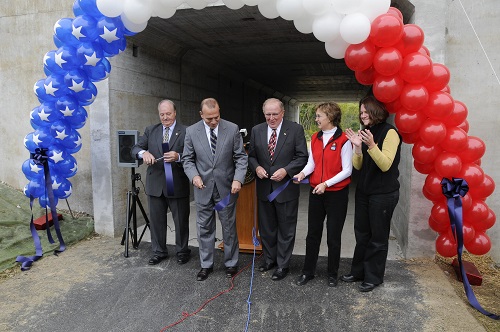
Hardy (far right) with Linda M. Boxx, Dan Onorato, and other municipal officials ribbon-cutting at the Duquesne Underpass.
Hardy was particularly influential in negotiating the land acquisition terms for U.S. Steel’s coke-gas pipeline
right-of-way, a process that took until December of 2006 to finalize.[6] Hardy, who was acting SVTC president, took part in writing the DCNR and the Allegheny Regional Asset District (RAD) grants needed to pay U.S. Steel for the land.[7] The total purchase price agreed upon by U.S. Steel and RTC was within the ballpark of $550,000[8], that included not only the acquisition cost but environmental clean-up fees to remove the sealed pipeline that still remained.[9] Hardy recognized that without an environmental study of the property, state grants could not be used for the acquisition.[10] Hardy oversaw the environmental study in a general capacity, along with project coordinator Jack Pauilk, and when it was completed in October of 2006 the RTC/Allegheny Trail Alliance (ATA) could move to secure state grants for the property’s acquisition.[11] U.S. Steel was a proponent and contributor of environmental remediation prior to the sale.
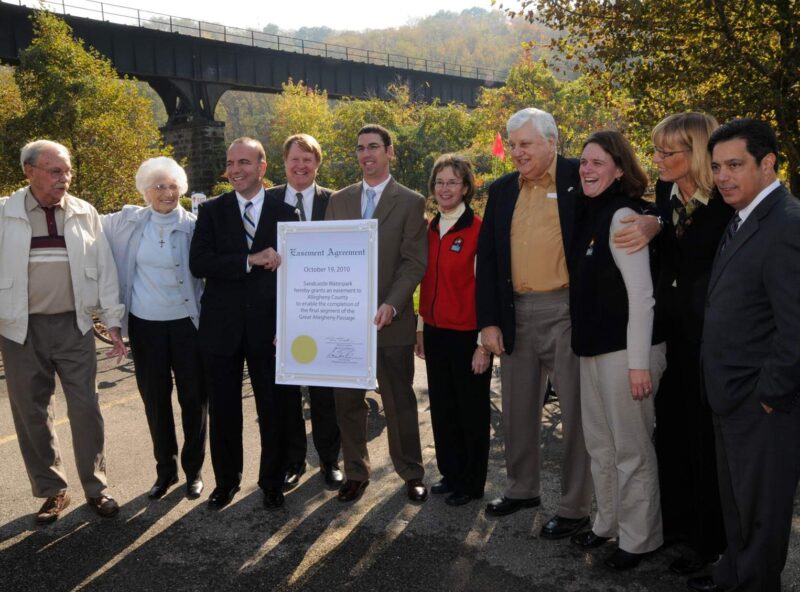
Hardy (third in from the right) during the Riverton Bridge deed agreement.
Despite the complications surrounding the coke-gas pipeline, Hardy’s prior experience with grant writing and trail construction knowledge from her days in Pittsburgh city hall proved invaluable in moving forward with trail development. Having established relationships with leaders in the surrounding communities and with industrial corporations like U.S. Steel, Hardy’s level-headed presence in both the SVTC and RTC was vital during the acquisition process. Hardy was an invaluable asset to the bigger picture, always providing a calm and collective approach in tackling the problem of the day.[12]
Her presence within the RTC and SVTC provided credibility in negotiations and board meetings, which in turn assisted the reputation of both trail groups.[13]With the pipeline property officially being developed in 2010 alongside the Port Perry and Whitaker Bridges, the GAP finally started to come together in Pittsburgh and its surrounding communities of Homestead, Duquesne, and McKeesport.
Hardy left PEC in 2012, after a decade of work on the GAP, to pursue a career in public health. She left the ATA and the RTC board of directors in 2013. She served on the ATA Board of Directors from 2000-2013 and has been a tremendous GAP trailblazer.
Hannah Hardy 2019 Interview Transcript with Avigail Oren
Author: Reed Hertzler
Endnotes
[1] Hannah Hardy (SVTC President and former PEC employee, Personal interview on experience building the GAP Trail in Pittsburgh, account of the acquisition of the coke-gas pipeline), interviewed by Avigail Oren, Pittsburgh, PA, April 3rd, 2019. Transcript: “Hannah Hardy 4.3.19_Final_AO_HH,” 32.
[2] Hannah Hardy, Transcript: “Hannah Hardy 4.3.19_Final_AO_HH,” 3.
[3] Hannah Hardy, Transcript: “Hannah Hardy 4.3.19_Final_AO_HH,” 9-11.
[4] Ibid.
[5] Hannah Hardy, Transcript: “Hannah Hardy 4.3.19_Final_AO_HH,” 15.
[6] Pennsylvania Environmental Council’s 2008 grant request to the Katherine Mabis McKenna Fdn., page 2.
[7] Special Warranty Deed of 22.9 acres (1.89 miles) in West Mifflin and Whitaker for right-of-way ownership, December 18, 2006.
[8] Documentation of ARAD Grant Reimbursement (awarded in 2002) signed off by Hardy for $250,000; DCNR matched grant of $200,000 (awarded in 2004) documentation, also detailed in correspondence by Hardy to Roy Kraynyk on December 27th, 2006.
[9] Payment Request from Community Conservation Partnerships Program (CCPP), the DCNR grant used to help pay for the coke-gas pipeline; can also refer to Special Warranty Deed of December 18, 2006 and Chicago Title Insurance Company of parcel coverage on December 16th, 2006.
[10] Hannah Hardy, Transcript: “Hannah Hardy 4.3.19_Final_AO_HH,” 16-17.
[11] Ibid.
[12] Michael Baker, Jr. Inc. Soil Sampling Report, completed in West Mifflin, PA, October 27th, 2006.
[13] Jack Paulik, email to Reed Hertzler, November 13th, 2019.
[14] Linda McKenna Boxx, email to Reed Hertzler, November 12th, 2019.

